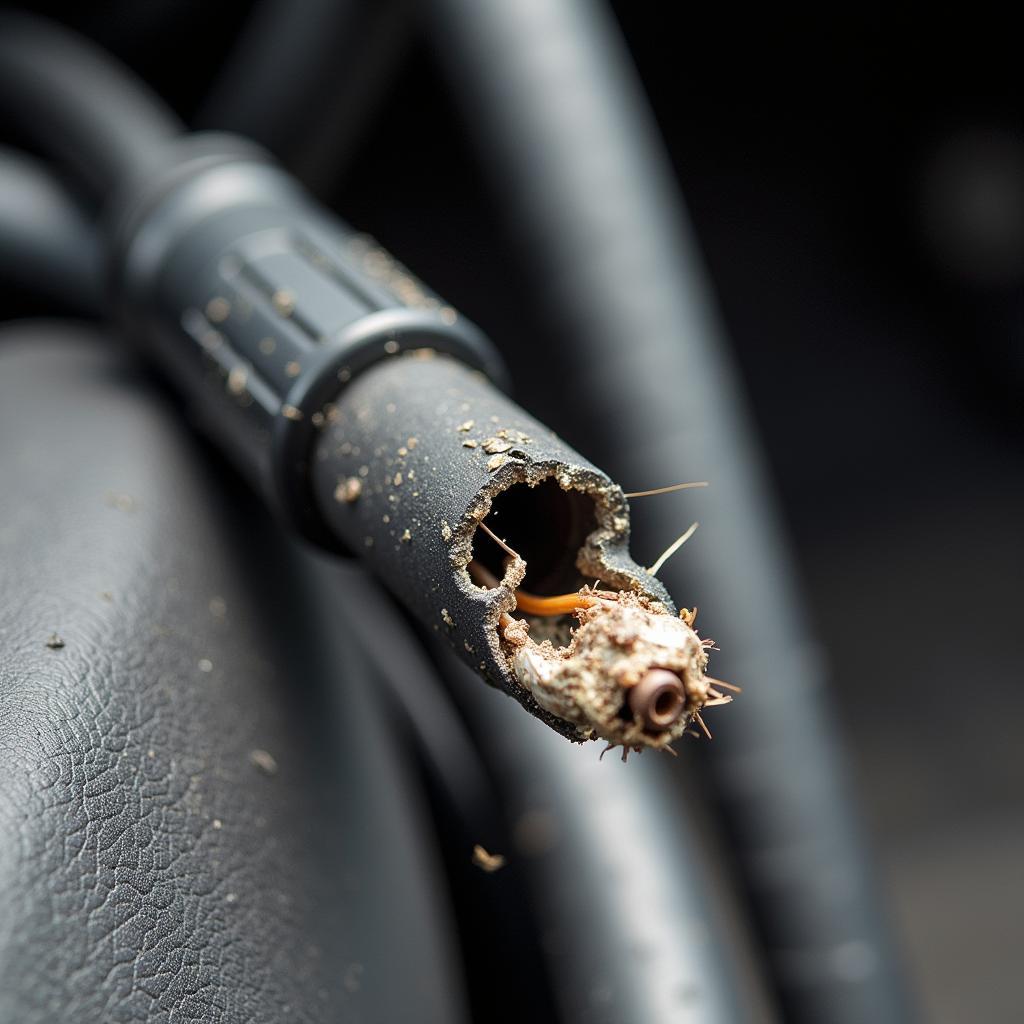Car Problems With Sharing A Fuse can be a real headache. From flickering lights to complete system failures, a single faulty fuse can disrupt multiple components in your vehicle. This article will guide you through identifying, troubleshooting, and resolving these issues, whether you’re a car owner, a mechanic, or an automotive technician.
Understanding the Basics of Car Fuses
Before diving into troubleshooting, let’s quickly review the fundamentals of car fuses. A fuse is a small safety device designed to protect your car’s electrical circuits from overloads. Think of it as a sacrificial lamb – it burns out to prevent damage to more expensive components. When a circuit draws too much current, the fuse melts, breaking the circuit and stopping the flow of electricity.
Why Do Cars Use Shared Fuses?
Sharing fuses is a common practice in automotive electrical systems. It simplifies wiring and reduces the overall number of fuses needed. This is especially true for circuits that draw low current or are only used intermittently. However, sharing a fuse can also lead to cascading failures, where a problem in one circuit affects others connected to the same fuse.
Common Car Problems Caused by Sharing a Fuse
One of the most frustrating aspects of shared fuses is that a problem in one circuit can lead to seemingly unrelated issues in another. For example, a faulty brake light might also cause your radio to stop working if they share the same fuse. Here are some common scenarios:
- Multiple components failing simultaneously: This is a telltale sign of a shared fuse issue. If several seemingly unrelated systems stop working at once, it’s likely that they’re connected to the same fuse.
- Intermittent problems: Sometimes, a loose connection or a partially blown fuse can cause intermittent failures. The components might work fine for a while, then suddenly stop, and then start working again.
- Flickering lights or dimming dashboard: A weak or overloaded circuit can cause lights to flicker or dim, especially when another component on the same circuit is activated.
Diagnosing and Fixing Car Problems with Sharing a Fuse
If you suspect a shared fuse is the culprit, here’s a step-by-step guide to diagnose and fix the problem:
- Locate the fuse box: Consult your owner’s manual to find the location of your car’s fuse box(es). There might be more than one.
- Identify the suspect fuse: Again, your owner’s manual will have a diagram showing which fuse protects which circuits. Look for the fuse associated with the malfunctioning components.
- Inspect the fuse: Remove the fuse and examine it carefully. A blown fuse will have a broken filament.
- Replace the fuse: If the fuse is blown, replace it with a new one of the exact same amperage. Using a higher amperage fuse can create a fire hazard.
- Test the components: After replacing the fuse, test the previously malfunctioning components to ensure they’re working correctly.
What if the New Fuse Blows Immediately?
If the new fuse blows immediately, it indicates a short circuit or an overload in one of the circuits sharing that fuse. This requires further investigation to identify the faulty component. You might need to use a multimeter to test the individual components on that circuit.
Expert Insights on Shared Fuse Issues
“Shared fuses can be tricky,” says John Miller, a seasoned automotive electrician with over 20 years of experience. “Often, the symptom doesn’t directly point to the root cause. You have to be methodical in your troubleshooting approach.”
Another expert, Sarah Johnson, a lead technician at a major auto repair chain, adds, “Never underestimate the importance of checking the fuse box first. It can save you hours of diagnostic time and unnecessary repairs.”
Conclusion
Car problems with sharing a fuse can be confusing, but with a systematic approach, they’re usually easy to fix. Remember to always consult your owner’s manual and replace blown fuses with the correct amperage. If you’re still having trouble, don’t hesitate to connect with the experts at AutoTipPro. We’re here to help!
You can reach us at +1 (641) 206-8880 or visit our office at 500 N St Mary’s St, San Antonio, TX 78205, United States.
FAQ
- Why do car manufacturers use shared fuses? To simplify wiring and reduce the number of fuses needed.
- How can I tell if a fuse is blown? A blown fuse will have a visible break in its filament.
- What should I do if a new fuse blows immediately? This indicates a short circuit or overload, requiring further investigation.
- Is it safe to use a higher amperage fuse? No, using a higher amperage fuse can create a fire hazard.
- Where can I find the fuse box diagram for my car? Your car’s owner’s manual will contain this diagram.
- What if I can’t find the problem after checking the fuses? Contact a qualified automotive technician for further diagnosis.
- Can shared fuses cause intermittent problems? Yes, a loose connection or partially blown fuse can cause intermittent issues.







Leave a Reply